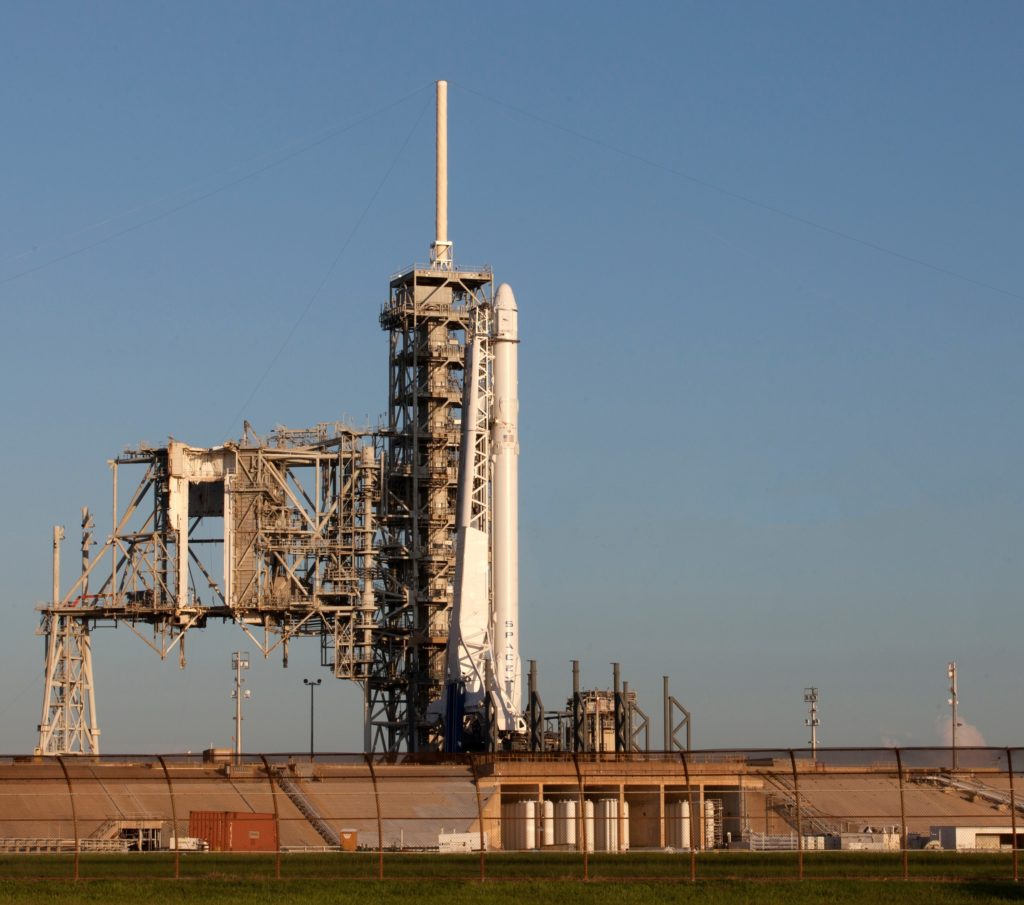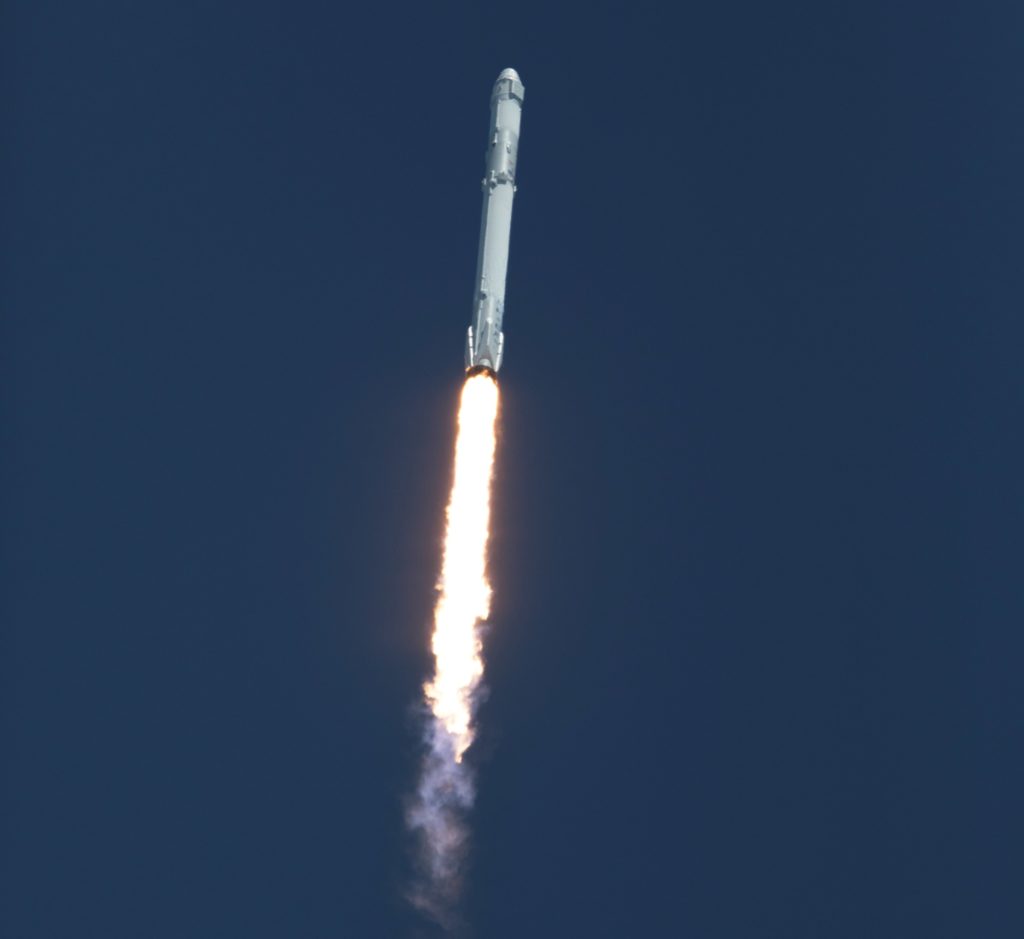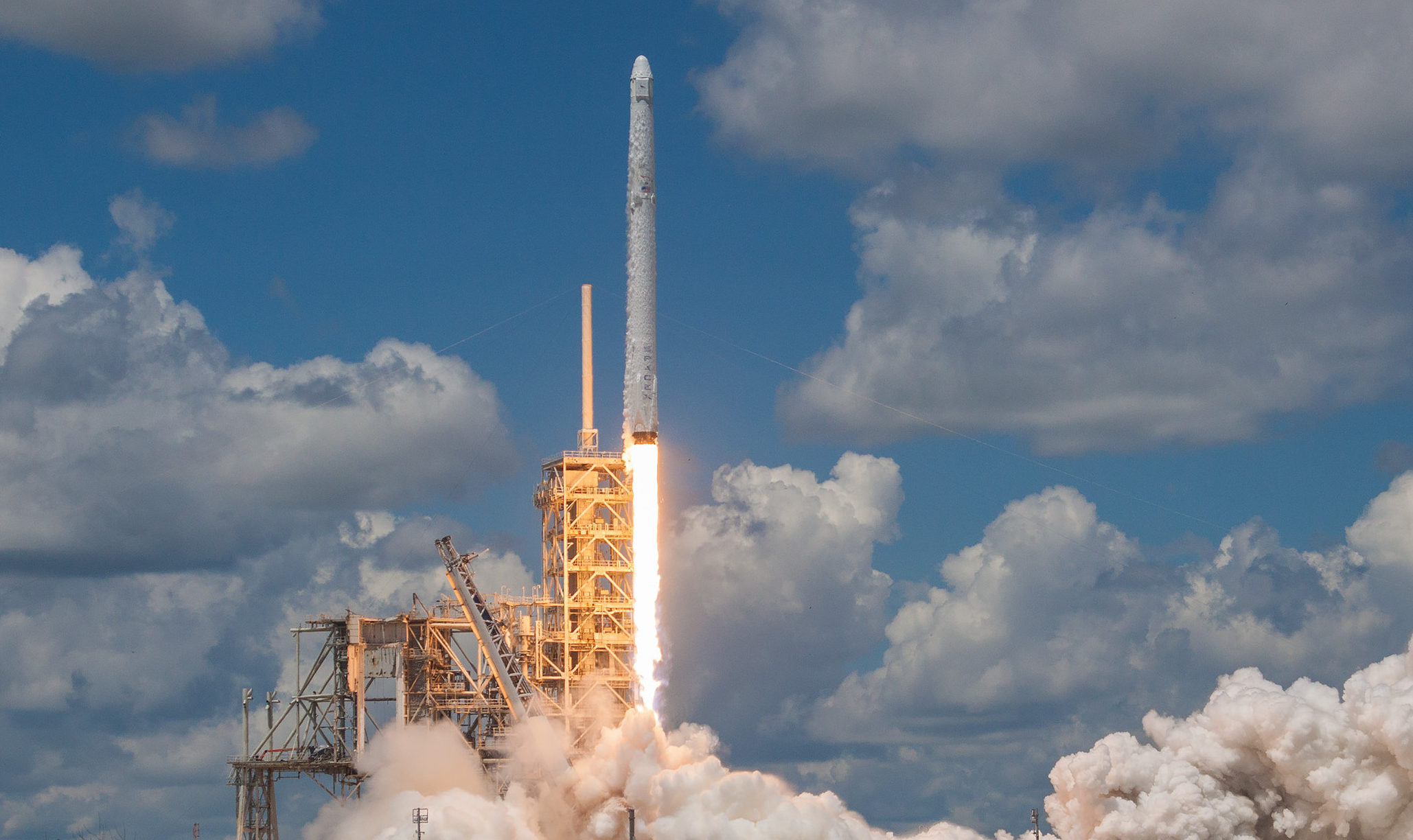
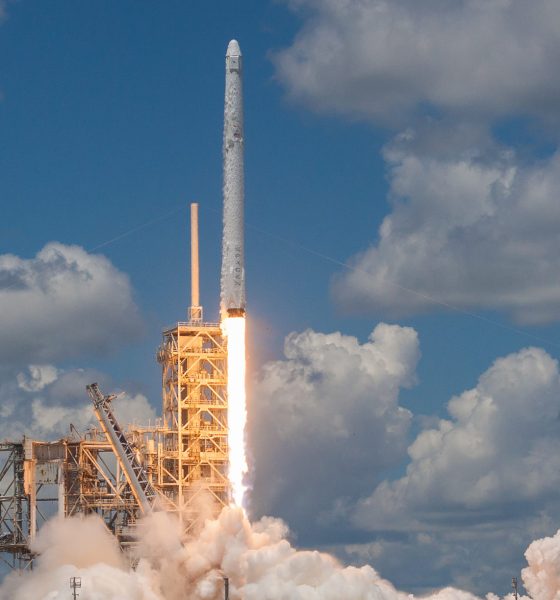
News
SpaceX and NASA deepen ties, NASA-sponsored reuse of Falcon 9 in discussion
NASA and SpaceX hosted a post-launch conference for the successful CRS-12 mission on Monday, revealing intriguing information about their plans and goals for the final months of 2017.
Dan Hartman of NASA and Hans Koenigsmann of SpaceX answered multiple questions from an audience of journalists regarding the future of SpaceX’s reusability program. Hans confirmed unofficial rumors that SpaceX’s Q4 2017 launch of SES-11 would utilize a flight-proven booster, likely one from a previous CRS mission. While this could mean either CRS-10 or CRS-11’s first stage, the most probable core is from CRS-10, numbered 1031.
- CRS-12 is the 39th time Falcon 9 has flown successfully. (NASA)
- With 41 attempts total, Falcon 9 has suffered two complete failures and one partial failure, giving a success rate of around 95%. (NASA)
Possibly even more exciting, Hartman acknowledged that NASA and SpaceX were deep into a process of data-gathering and sharing in an effort to certify flight-proven Falcon 9s for CRS missions in the future. While the implication was that this process is ongoing, Hartman suggested that a preliminary decision could be made before the end of September for SpaceX’s December 2017 launch of CRS-13, indicating that CRS-13 is a candidate for being the first NASA-sponsored reuse of a Falcon 9. Hartman repeatedly reiterated that NASA was currently expecting to fly CRS-13 on a new booster, but the undertone of the comments hinted that he was simply playing his and NASA’s cards close. In spite of the near-term uncertainty, Hartman stated that CRS reuse was “a matter of ‘when’”.
Intriguingly, while it was originally assumed that CRS-12 would feature titanium grid fins, it became clear that the vehicle sported traditional aluminum grid fins. This is likely a result of CRS-12’s recovery being low energy, and it is also reasonable to assume that SpaceX possesses an inventory of already-manufactured aluminum grid fins that they are now trying to avoid wasting.
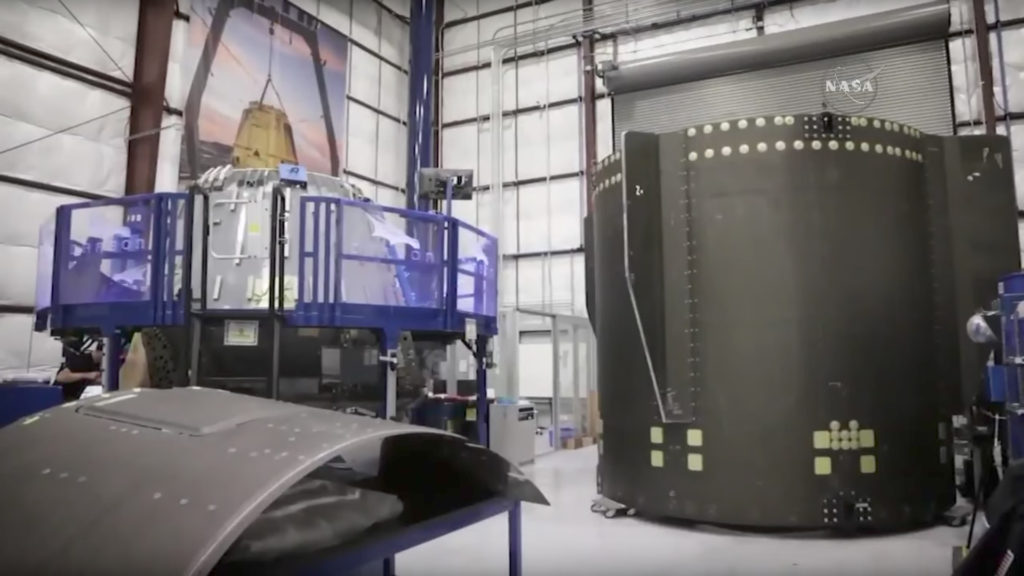
NASA slipped a sly glimpse of Dragon 2 construction into their live coverage SpaceX’s CRS-12 launch. On the left is a Dragon 2 pressure vessel, vehicle’s “trunk” on the right. (NASA)
Asked about a decision for who the first two NASA crew would be on SpaceX’s Demo-2 flight in June of 2018, Hartman suggested that a decision could be made as early as next month, or September. However, several statements regarding the current status of SpaceX’s first Commercial Crew launches added a level of uncertainty to the conversation. Hartman said that he was hopeful SpaceX would be able to operationally begin flying crew to the ISS as soon as FY2019, which begins October 1, 2018. However, he suggested that NASA was interested in SpaceX flying Dragon 2 solely with cargo “to get some more flights under its belt” ahead of “routine” crew transport. While difficult to reconcile those statements with a publicly acknowledged goal of February and June 2018 for SpaceX’s first demonstration flights of Dragon 2, it is clear that both groups are working incredibly hard to solidify those dates and prepare Dragon 2 for its first flight or flights next year.
For the last four and a half months of 2017, Hans confirmed that SpaceX will attempt to continue to pursue a cadence similar to that seen in the first half of the year. Musk’s indication of 12 launches for the rest of the year appear to be plausible, Falcon Heavy included. Publicly available manifest information currently shows that SpaceX has another launch scheduled for the West Coast on August 24th, with two more launches tentatively penciled in for September, one in October, three in November, and four in December. Changes are inevitable given the ever-shifting nature of the launch industry, but 22 launch year does look to be achievable for SpaceX, particularly once the company has two Eastern launch pads up and running.
Catch the post-launch briefing in its entirety below.

Elon Musk
SpaceX issues statement on Starship V3 Booster 18 anomaly
The incident unfolded during gas-system pressure testing at the company’s Massey facility in Starbase, Texas.

SpaceX has issued an initial statement about Starship Booster 18’s anomaly early Friday. The incident unfolded during gas-system pressure testing at the company’s Massey facility in Starbase, Texas.
SpaceX’s initial comment
As per SpaceX in a post on its official account on social media platform X, Booster 18 was undergoing gas system pressure tests when the anomaly happened. Despite the nature of the incident, the company emphasized that no propellant was loaded, no engines were installed, and personnel were kept at a safe distance from the booster, resulting in zero injuries.
“Booster 18 suffered an anomaly during gas system pressure testing that we were conducting in advance of structural proof testing. No propellant was on the vehicle, and engines were not yet installed. The teams need time to investigate before we are confident of the cause. No one was injured as we maintain a safe distance for personnel during this type of testing. The site remains clear and we are working plans to safely reenter the site,” SpaceX wrote in its post on X.
Incident and aftermath
Livestream footage from LabPadre showed Booster 18’s lower half crumpling around the liquid oxygen tank area at approximately 4:04 a.m. CT. Subsequent images posted by on-site observers revealed extensive deformation across the booster’s lower structure. Needless to say, spaceflight observers have noted that Booster 18 would likely be a complete loss due to its anomaly.
Booster 18 had rolled out only a day earlier and was one of the first vehicles in the Starship V3 program. The V3 series incorporates structural reinforcements and reliability upgrades intended to prepare Starship for rapid-reuse testing and eventual tower-catch operations. Elon Musk has been optimistic about Starship V3, previously noting on X that the spacecraft might be able to complete initial missions to Mars.
Investor's Corner
Tesla analyst maintains $500 PT, says FSD drives better than humans now
The team also met with Tesla leaders for more than an hour to discuss autonomy, chip development, and upcoming deployment plans.

Tesla (NASDAQ:TSLA) received fresh support from Piper Sandler this week after analysts toured the Fremont Factory and tested the company’s latest Full Self-Driving software. The firm reaffirmed its $500 price target, stating that FSD V14 delivered a notably smooth robotaxi demonstration and may already perform at levels comparable to, if not better than, average human drivers.
The team also met with Tesla leaders for more than an hour to discuss autonomy, chip development, and upcoming deployment plans.
Analysts highlight autonomy progress
During more than 75 minutes of focused discussions, analysts reportedly focused on FSD v14’s updates. Piper Sandler’s team pointed to meaningful strides in perception, object handling, and overall ride smoothness during the robotaxi demo.
The visit also included discussions on updates to Tesla’s in-house chip initiatives, its Optimus program, and the growth of the company’s battery storage business. Analysts noted that Tesla continues refining cost structures and capital expenditure expectations, which are key elements in future margin recovery, as noted in a Yahoo Finance report.
Analyst Alexander Potter noted that “we think FSD is a truly impressive product that is (probably) already better at driving than the average American.” This conclusion was strengthened by what he described as a “flawless robotaxi ride to the hotel.”
Street targets diverge on TSLA
While Piper Sandler stands by its $500 target, it is not the highest estimate on the Street. Wedbush, for one, has a $600 per share price target for TSLA stock.
Other institutions have also weighed in on TSLA stock as of late. HSBC reiterated a Reduce rating with a $131 target, citing a gap between earnings fundamentals and the company’s market value. By contrast, TD Cowen maintained a Buy rating and a $509 target, pointing to strong autonomous driving demonstrations in Austin and the pace of software-driven improvements.
Stifel analysts also lifted their price target for Tesla to $508 per share over the company’s ongoing robotaxi and FSD programs.
Elon Musk
SpaceX Starship Version 3 booster crumples in early testing
Photos of the incident’s aftermath suggest that Booster 18 will likely be retired.
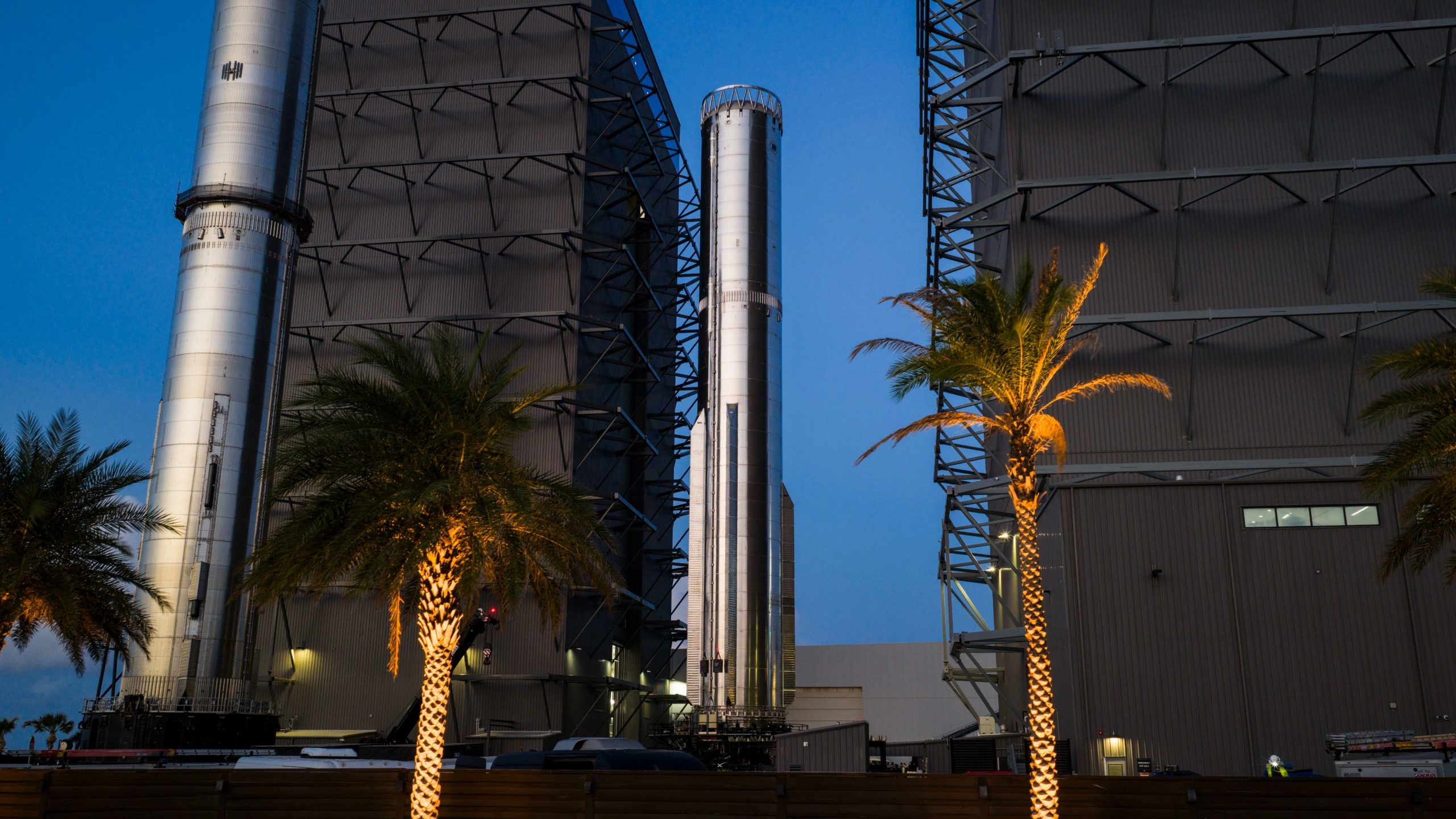
SpaceX’s new Starship first-stage booster, Booster 18, suffered major damage early Friday during its first round of testing in Starbase, Texas, just one day after rolling out of the factory.
Based on videos of the incident, the lower section of the rocket booster appeared to crumple during a pressurization test. Photos of the incident’s aftermath suggest that Booster 18 will likely be retired.
Booster test failure
SpaceX began structural and propellant-system verification tests on Booster 18 Thursday night at the Massey’s Test Site, only a few miles from Starbase’s production facilities, as noted in an Ars Technica report. At 4:04 a.m. CT on Friday, a livestream from LabPadre Space captured the booster’s lower half experiencing a sudden destructive event around its liquid oxygen tank section. Post-incident images, shared on X by @StarshipGazer, showed notable deformation in the booster’s lower structure.
Neither SpaceX nor Elon Musk had commented as of Friday morning, but the vehicle’s condition suggests it is likely a complete loss. This is quite unfortunate, as Booster 18 is already part of the Starship V3 program, which includes design fixes and upgrades intended to improve reliability. While SpaceX maintains a rather rapid Starship production line in Starbase, Booster 18 was generally expected to validate the improvements implemented in the V3 program.
Tight deadlines
SpaceX needs Starship boosters and upper stages to begin demonstrating rapid reuse, tower catches, and early operational Starlink missions over the next two years. More critically, NASA’s Artemis program depends on an on-orbit refueling test in the second half of 2026, a requirement for the vehicle’s expected crewed lunar landing around 2028.
While SpaceX is known for diagnosing failures quickly and returning to testing at unmatched speed, losing the newest-generation booster at the very start of its campaign highlights the immense challenge involved in scaling Starship into a reliable, high-cadence launch system. SpaceX, however, is known for getting things done quickly, so it would not be a surprise if the company manages to figure out what happened to Booster 18 in the near future.
